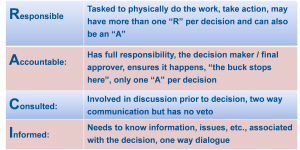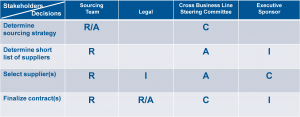Preparing a spend analysis, doing supply market research, determining your sourcing strategy, developing / executing a negotiation strategy, writing a contract, putting a new supplier place – these are the basic steps associated with Strategic Sourcing. These steps can be found in any standard sourcing process whether it has five, six or nine steps – they are all the same. Procurement groups that are striving to be more strategic or “transform” from a more tactical organization believe that having that process and discipline in place is the silver bullet to making magic happen – millions upon millions of dollars in savings. If only it were that simple 🙂 !
For many years, more than I care to count, we have been talking about the REAL challenges in trying to move from tactical buying to more strategic. While all the activities I have noted above are important, they are the easy part. The difficulty comes when we try to coordinate our buying practices (creating leverage) within our own organization and need decisions to get made across the organization (across multiple business units) vs. within a single business unit (which is within the normal course of business). Another challenge area is getting our internal business partners to relinquish ANY of their decision making power when it comes to buying “what” they want and from “who”. A big concern is having Procurement making those buying decisions for them.
I sat through a client stakeholder meeting this morning where the Procurement organization was presenting their business case for “studying” professional services spend to their business units. It is a large spend area that is bought independently within each business unit today and may represent a huge opportunity for synergies (cost being just one element). This was the first time the three business units came together to even talk about this spend area and I was obvious that organizational lines were drawn. The sourcing team presented the objective of the “study” along with a RACI chart that laid out all the key decision that would need to be made throughout the study and defined the decision makers – giving the most important decisions to the stakeholder team (senior reps from all the business units. As an observer, it was interesting to watch the dynamics in the room. As soon as it was spelled out that Procurement was NOT the decision maker (just the facilitator of the process – no small task 🙂 ) and that all the Business units would participate and have a voice in the “important” decisions, everyone relaxed. If you are not familiar with a RACI chart, it is a simple, very powerful tool for decision making – laying out key decisions and assigning decision making roles to either individuals or groups (e.g. a steering committee). The roles are as follows:

Here is an example of a simple RACI chart:

What you will notice is that this tool is VERY simple, easy to complete but delivers a very powerful message. If I am part of the Cross Business Line Steering Committee and see that I have the “A” on the two most important decisions in the process, then I can relax. Setting up the Cross Business Line Steering Committee is a great way to cajole disparate Business Units into working together to get decisions made for the overall organization. By the way, there may be committees like that already in place within your organization that you can tap into – it makes life a whole lot easier. Remember that the greatest challenges in most Sourcing organizations are internal . . And the decision goes to . . . . .
Let us know what you think and join in the conversation.


3 Comments
Pingback: Perform vs. Buy – How to Decide? - News You Can Use
Pingback: Guest Blog- Fallacies in Procurement Reasoning - News You Can Use
Pingback: What Kills More Women? - News You Can Use